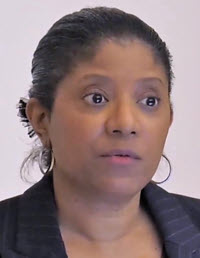Become a Patreon!
Abstract
Excerpted From: Ingrid Waldron, Mapping Racial Geographies of Violence on the Colonial Landscape, 38 Windsor Yearbook of Access to Justice 1 (2022) (25 Footnotes) (Full Document)
 In thinking through the importance of using a socio-spatial analysis to highlight the symbolic and material ways in which Indigenous and Black communities have experienced “spatial violence” several questions need to be considered: 1) How do socially constructed ideologies about race, class, gender, and other social identities shape the constitution and perception of space?; 2) How are these ideologies spatialized in rural and urban settings?; 3) How is the spatial organization of Indigenous, Black and other racialized bodies enabled through boundary-making practices supported by policy and law?; and 4) How do ideologies about race, class, gender, and other identities inform policies and actions on environmental racism and other place-based inequalities? Spatial violence refers to the ways in which racialized people are harmed by state-sanctioned violence that enable and expose these communities to environmental racism, public infrastructure inequalities, the climate crisis and other forms of domination and exploitation in the spaces and places where they live, work and play. Space as a socially constructed and highly contested product and idea bound up in political, cultural, and economic meanings.
In thinking through the importance of using a socio-spatial analysis to highlight the symbolic and material ways in which Indigenous and Black communities have experienced “spatial violence” several questions need to be considered: 1) How do socially constructed ideologies about race, class, gender, and other social identities shape the constitution and perception of space?; 2) How are these ideologies spatialized in rural and urban settings?; 3) How is the spatial organization of Indigenous, Black and other racialized bodies enabled through boundary-making practices supported by policy and law?; and 4) How do ideologies about race, class, gender, and other identities inform policies and actions on environmental racism and other place-based inequalities? Spatial violence refers to the ways in which racialized people are harmed by state-sanctioned violence that enable and expose these communities to environmental racism, public infrastructure inequalities, the climate crisis and other forms of domination and exploitation in the spaces and places where they live, work and play. Space as a socially constructed and highly contested product and idea bound up in political, cultural, and economic meanings.
[. . .]
In conclusion, a spatial analysis highlights the ways in which space embeds into the places where we live, work and play inequalities of power and decision-making. A consideration of the spatial dynamics of power and the politics of space helps us to think through the role that race, gender, socio-economic status, and geographic location play in place-based inequalities, such as environmental racism, climate change, and public infrastructure inequalities. Therefore, space must be viewed as more than a geographical area. Rather, it is a socially constructed and highly contested product bound up in political, cultural, and economic meanings. In pushing toward a rethinking of spatial violence in Canada, it is important to open a discursive space that maps the racially violent encounters that Indigenous and Black peoples have long experienced in this country. It is through such an analysis that we come understand, as McKittrick points out, how Indigenous and Black geographies are permanently linked to the Canadian landscape through racial violences of the past and the present.
Professor and HOPE Chair in Peace and Health, Global Peace and Social Justice Program, Department of History, Faculty of Humanities, McMaster University.
Become a Patreon!


